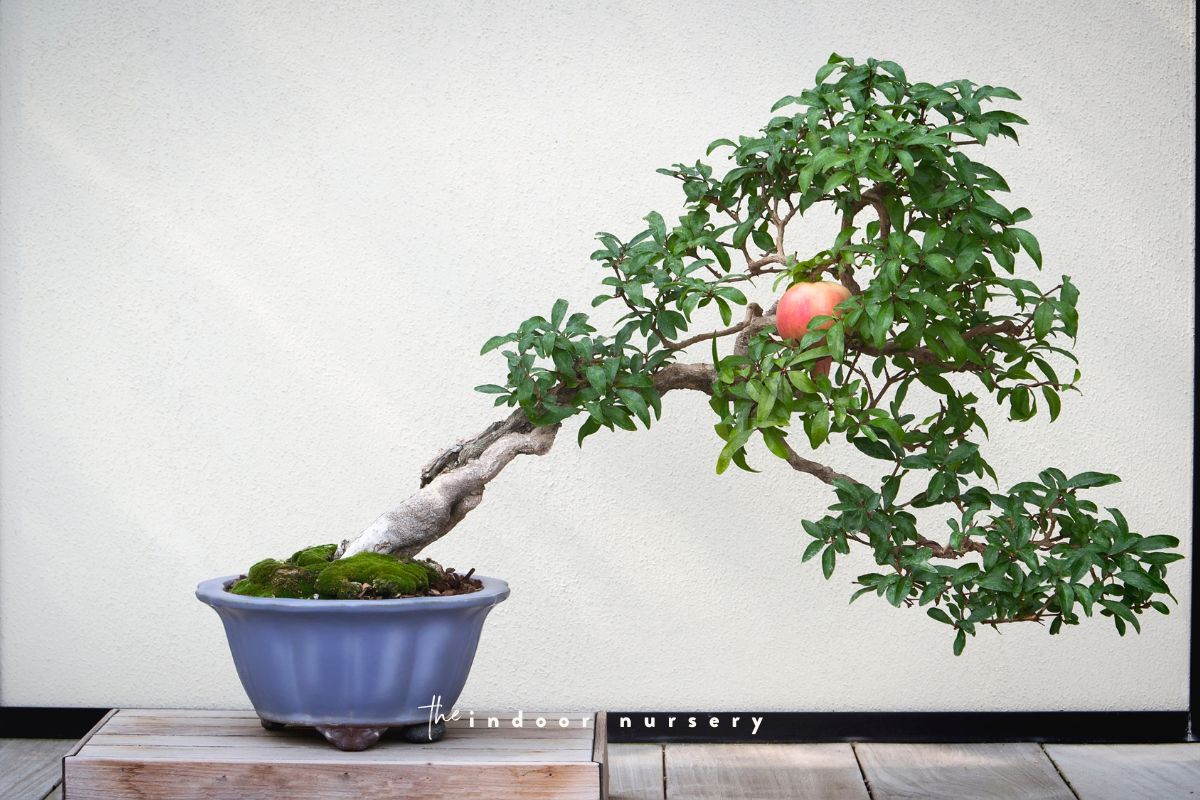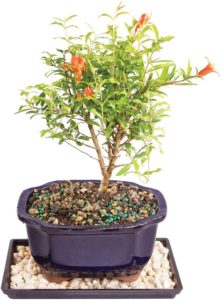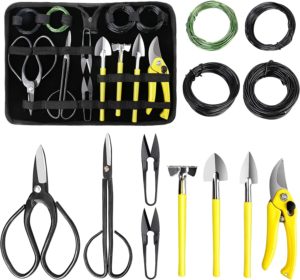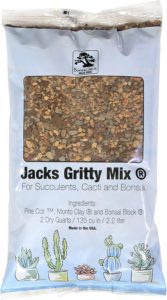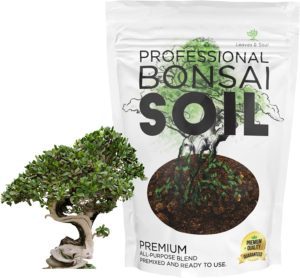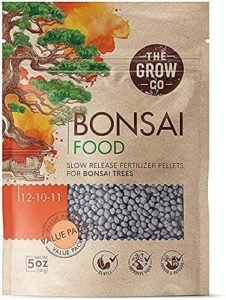Healthy pomegranate trees can grow to be quite large, reaching up to 20 feet tall. A pomegranate bonsai tree, on the other hand, grows into the size of its bonsai pot, keeping this beautiful bonsai tree a miniature version of the full-sized Punica granatum (AKA Pomegranate Tree).
This deciduous tree has glossy, dark green leaves and beautiful, red flowers. The jewel of this bonsai tree is the pomegranate fruit that it produces, a big red pomegranate filled with tart and sweet seeds. The beautiful flowers and fruit (ehrm, pomegranate seeds) are what makes caring for a pomegranate bonsai so darn fun.
Here’s everything you need to know to make your cute little pomegranate bonsai tree grow.
Caring for your pomegranate bonsai
The art of bonsai begins by intimately understanding the needs of your growing bonsai. While we can review all of the proper care, it’s important to pay close attention to the cues that your bonsai plant needs.
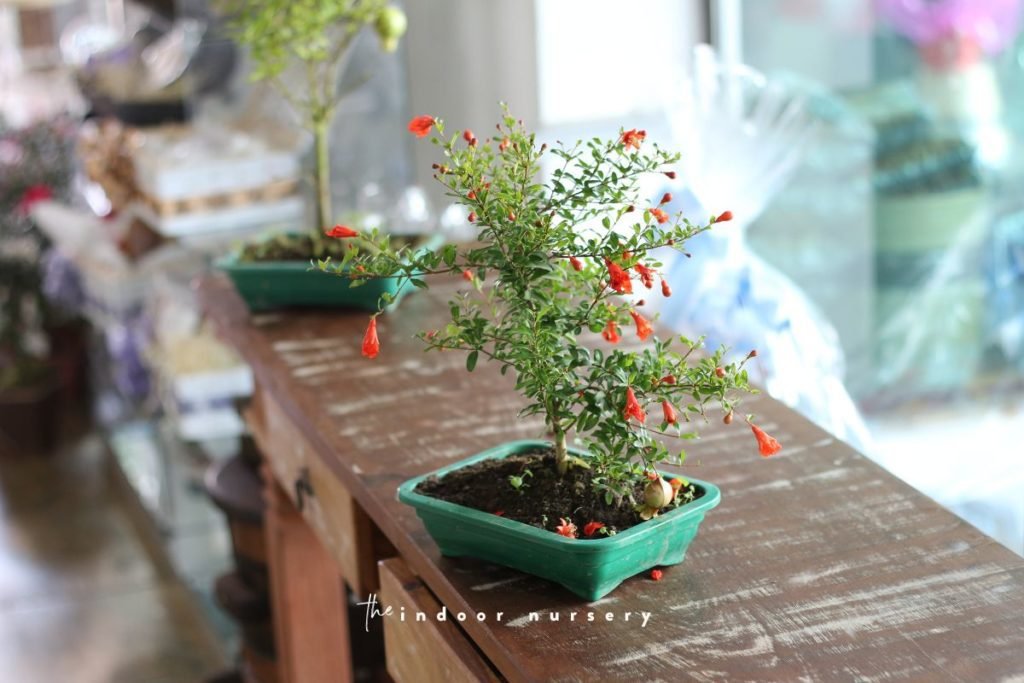
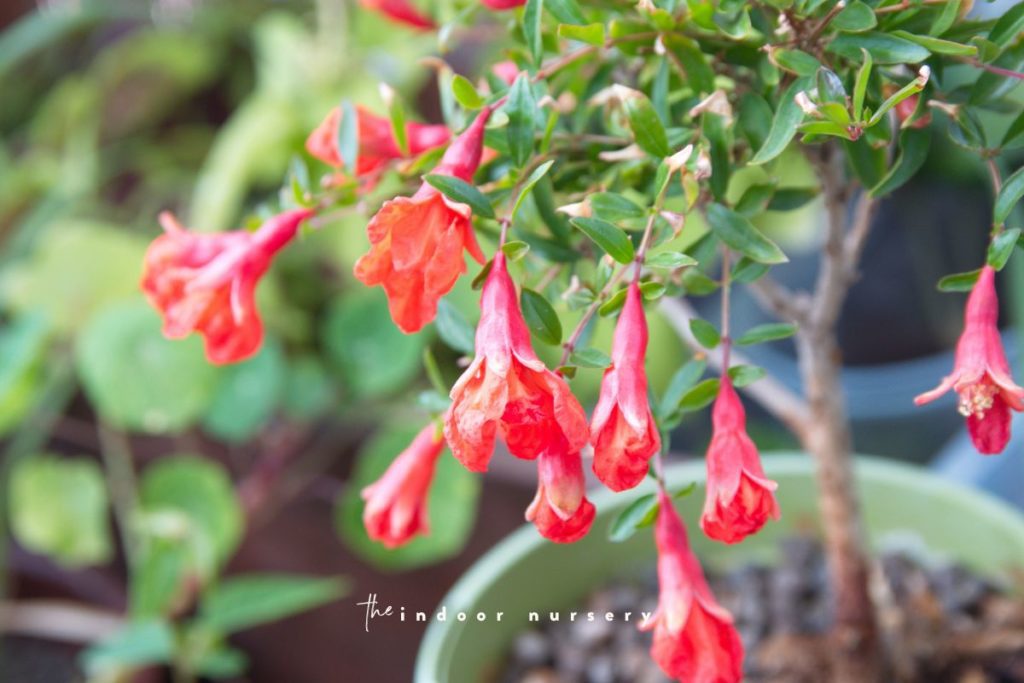
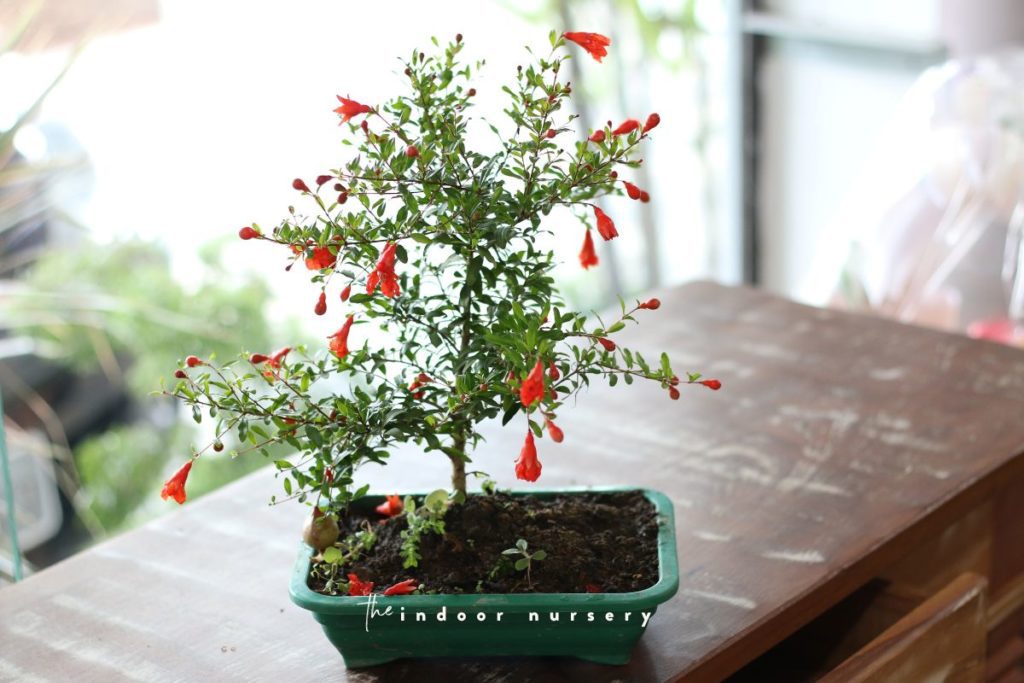
Pruning, Wiring, & Shaping
Pomegranate bonsais need heavy pruning, making it easy to try almost any bonsai style. Pruning should be done in early spring or late fall. For making an informal upright or cascade shape, cut back about one-third of the previous years’ growth. For making formal upright shape, cut back two-thirds of the previous years’ growth. Wiring should be done in early spring or late fall. When wiring, be careful not to damage the bark.
Water, Soil, & Fertilizing
Water your pomegranate bonsai regularly, allowing the soil to dry out between waterings. If you’re in a dry climate, then you can place a humidity tray underneath the bonsai container to maintain moist soil. If the soil remains wet, then consider repotting your bonsai tree in fresh, well draining bonsai soil.
Feed your tree once a month with a balanced bonsai fertilizer. Pomegranate bonsais should be repotted every two to three years. The best time to repot your pomegranate bonsai is in early spring, just before growing season.
Many people like using a liquid bonsai fertilizer. I generally like the bonsai food pellets better because they are slow release, which is better suited to bonsai trees. If you do opt for a liquid fertilizer, then look for one made for bonsai trees and follow the instructions carefully.
Location & Lighting
Pomegranate bonsais need full sunlight and should be placed in a sunny spot outdoors and should receive around 6-8 hours of direct sunlight each day. Though they are a sun-loving tree species, do protect your pomegranate bonsai tree from intense heat and harsh sunlight. In late winter, they should be brought indoors to a cool, bright location above freezing temperatures.
Disease & Pests
Different pomegranate varieties can have different levels of susceptibility to disease. However, in general, pomegranates can be susceptible to diseases such as fungal infections, root rot, and blight. To help prevent diseases, it is important to plant pomegranates in well-draining soil and to water them regularly. Additionally, keeping the area around the pomegranate plants free of debris and weeds can also help reduce the risk of disease.
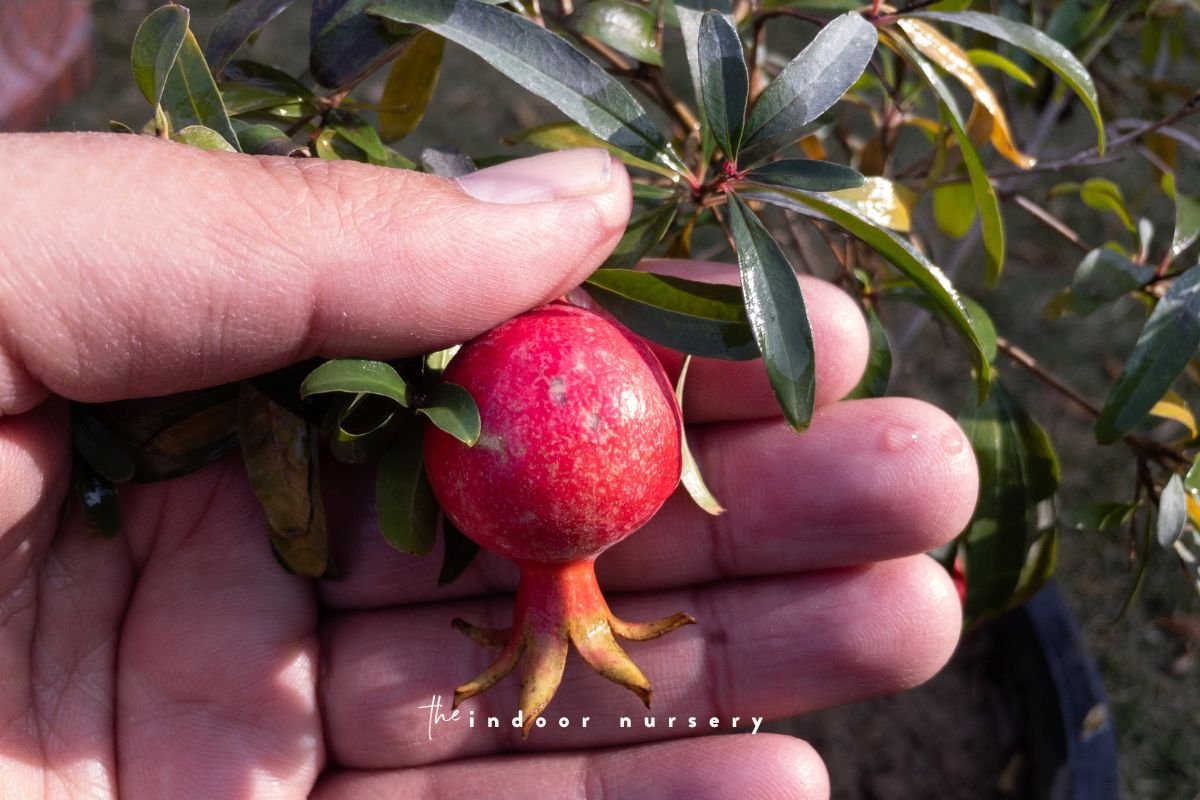
How to harvest pomegranate bonsai fruit
Pomegranate bonsai fruit is typically ready to harvest in late summer or early fall. To harvest the pomegranate fruit, cut the stem that attaches the fruit to the tree. Be careful not to damage the tree when harvesting the fruit. Pomegranate bonsai typically takes 3-5 years to bear fruit.
learn more about bonsai plants
- How to keep bonsai leaves small
- How long do bonsai trees live? Longer than you.
- How to care for your Japanese black pine bonsai
- How to grow aqua bonsai (water bonsai)
- How to care for a Red Maple bonsai tree
- Pomegranate bonsai tree care guide for beginners
- 15 bonsai styles and shapes that will inspire you
- Bonsai palm tree care: How to care for palm tree bonsais

